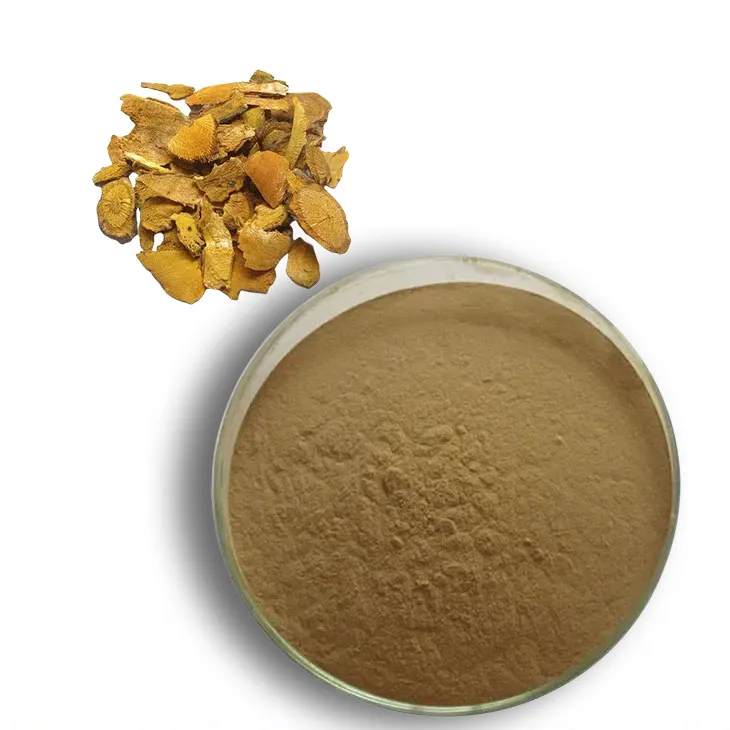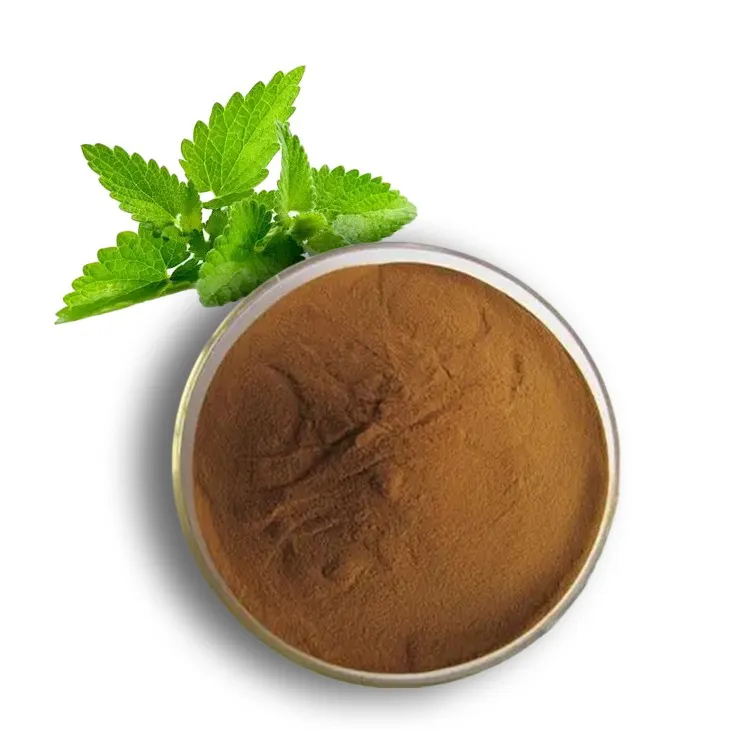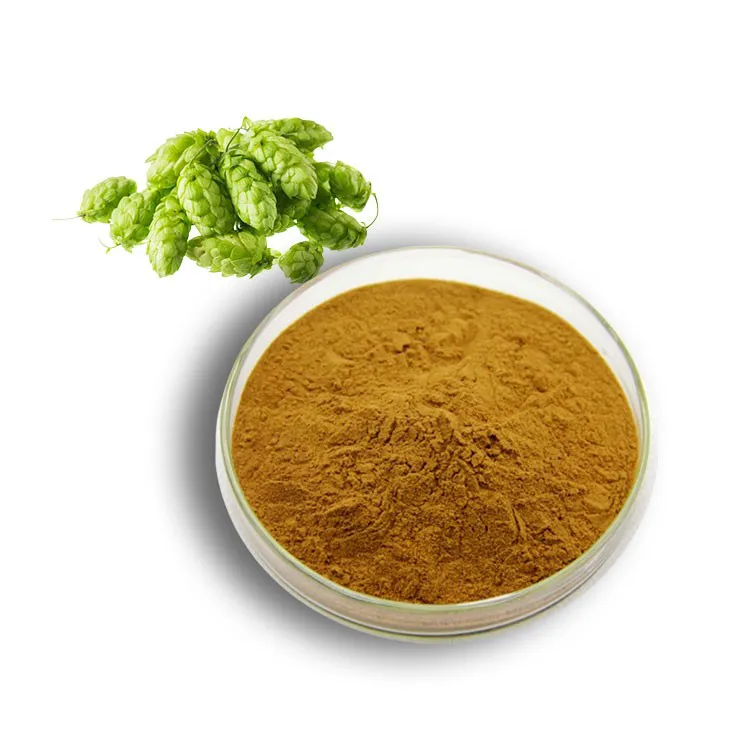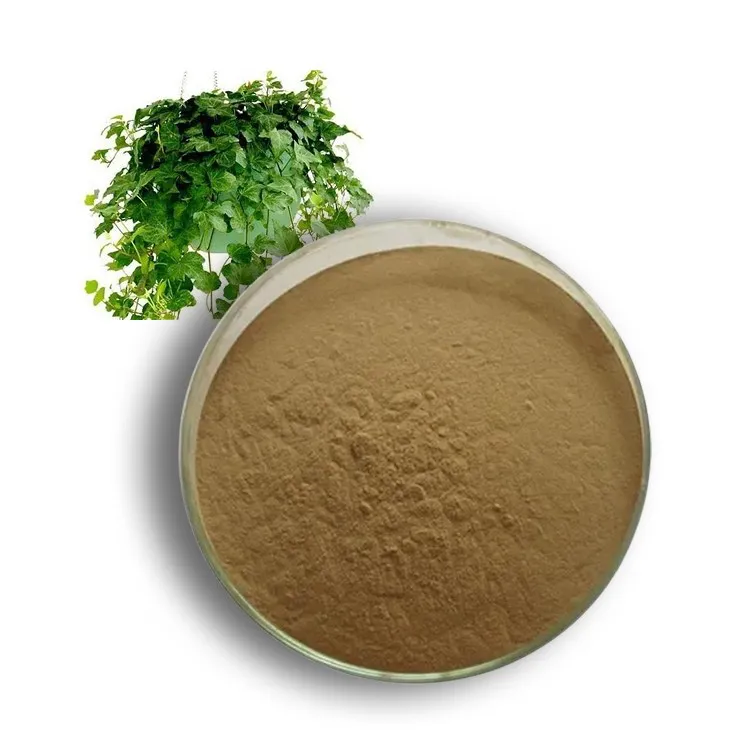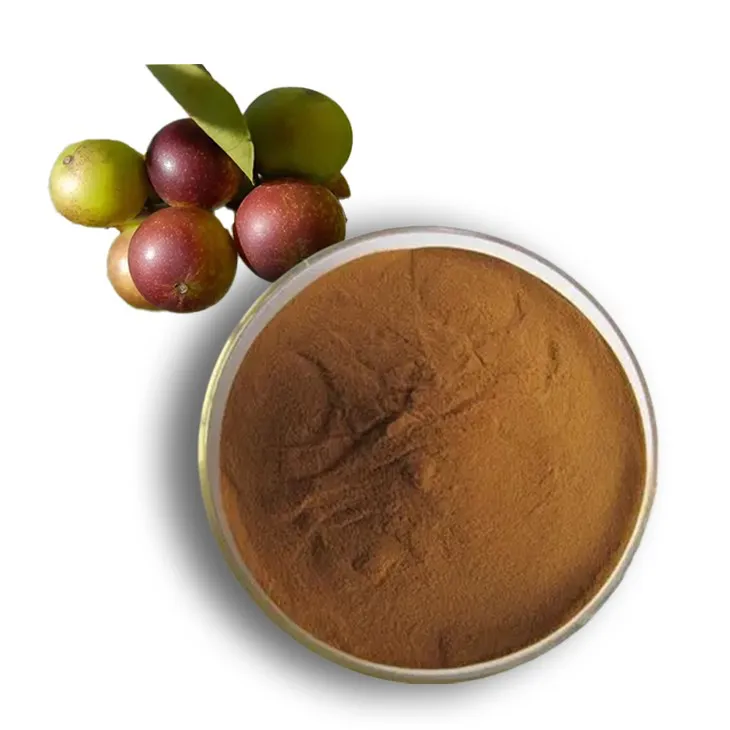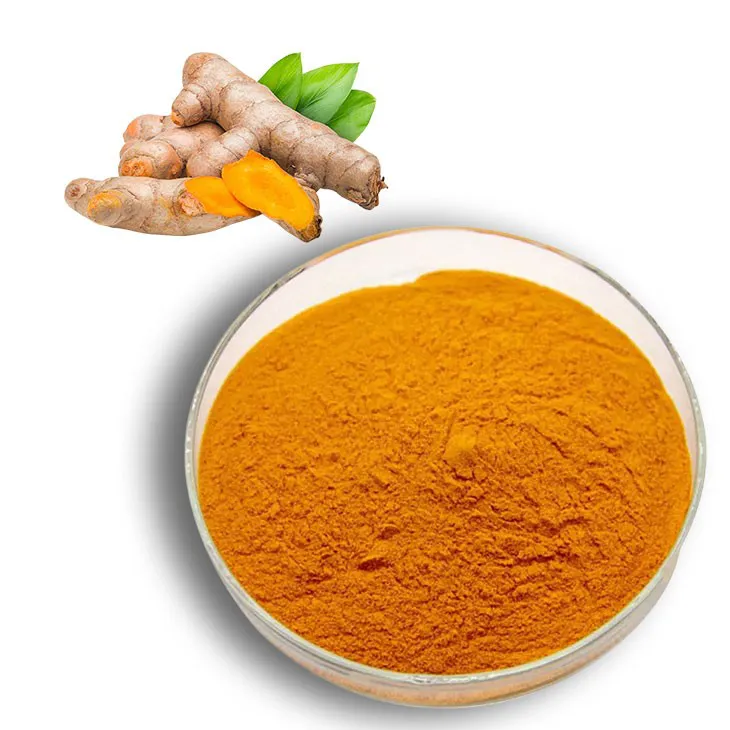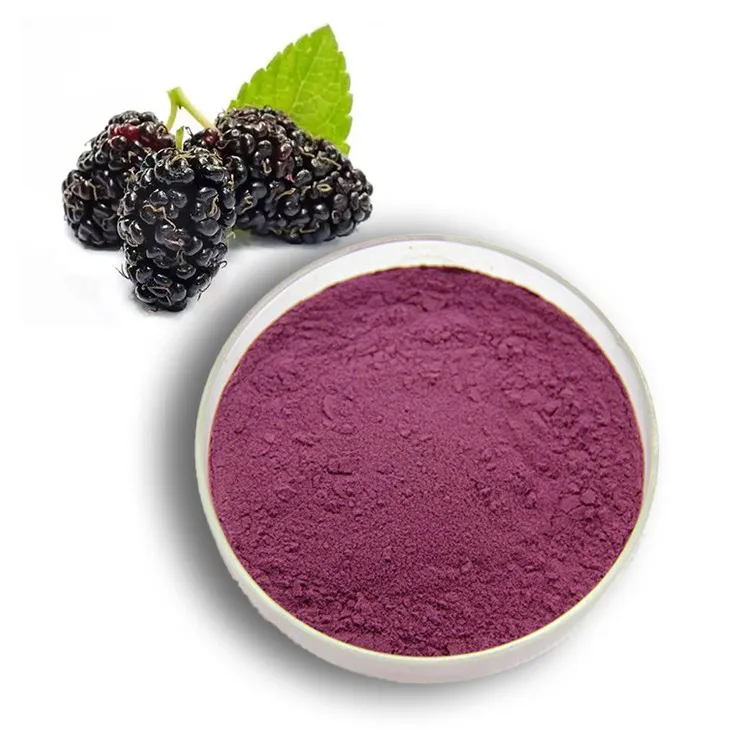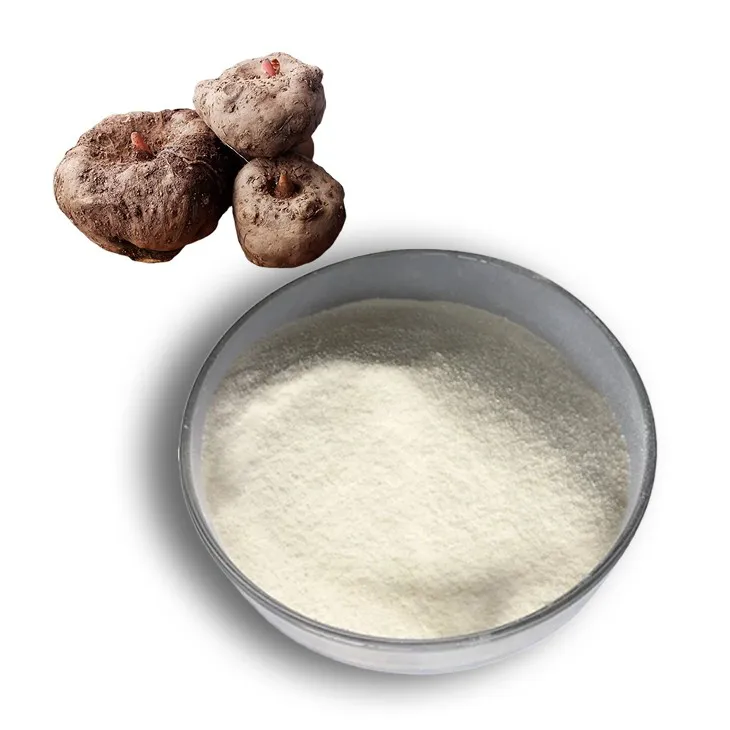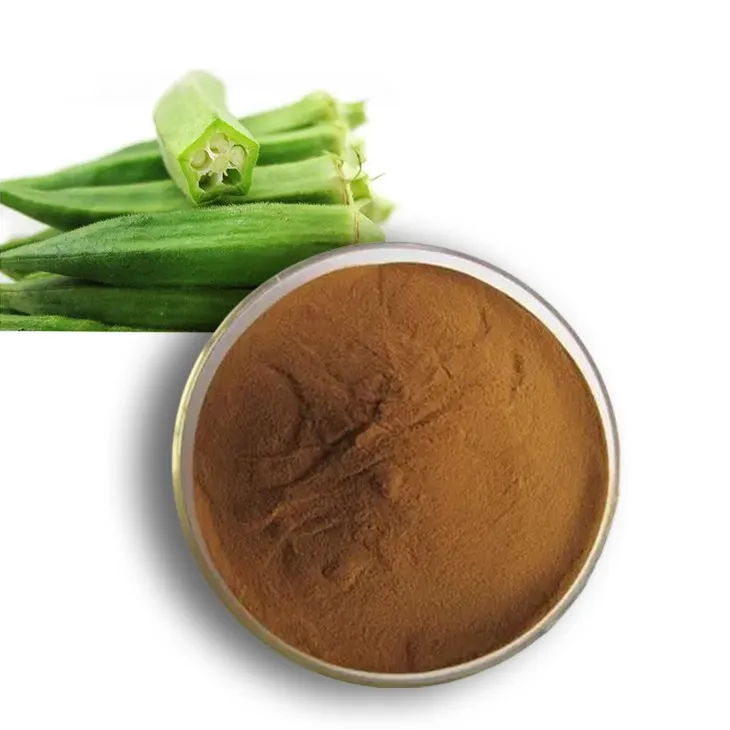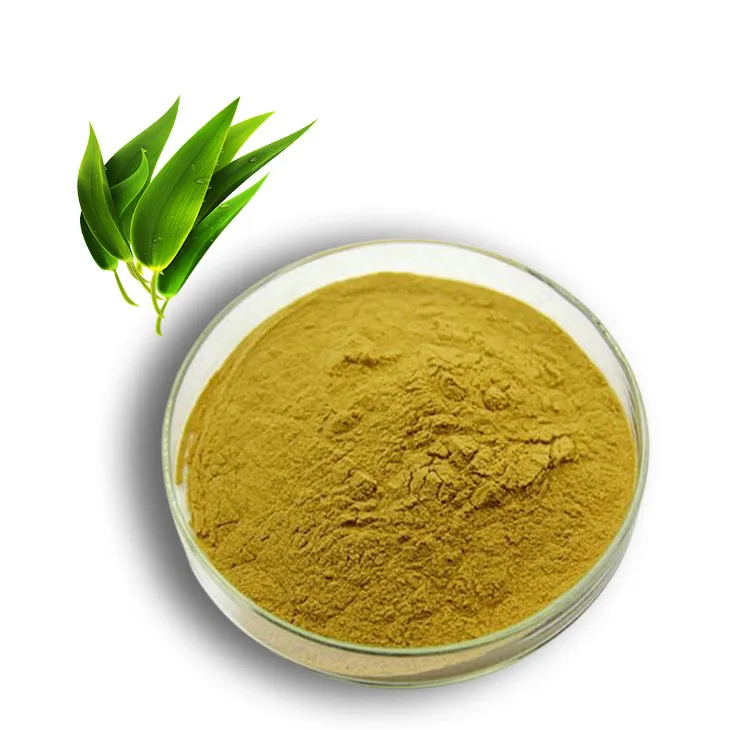- 0086-571-85302990
- sales@greenskybio.com
china plant extract
2023-09-26
1. Historical Significance of Chinese Plant Extracts
1. Historical Significance of Chinese Plant Extracts
Chinese plant extracts have a rich history that dates back thousands of years, deeply rooted in the ancient Chinese civilization. The use of plant extracts in China predates the written history, with evidence suggesting that early inhabitants utilized various herbs for medicinal purposes. The historical significance of Chinese plant extracts is multifaceted, encompassing cultural, medicinal, and philosophical aspects.
Cultural Significance
The cultural significance of Chinese plant extracts is evident in the reverence for nature and the belief in the interconnectedness of all living things. This holistic view of the natural world has led to the development of a vast knowledge base regarding the properties and uses of various plants. Chinese culture has always placed a high value on health and longevity, which is reflected in the extensive use of plant extracts for maintaining well-being.
Medicinal Significance
In the realm of medicine, Chinese plant extracts have played a pivotal role in the development of Traditional Chinese Medicine (TCM). TCM is a comprehensive system of health and wellness that has been practiced for over 2,500 years. It encompasses a variety of treatments, including herbal medicine, acupuncture, massage (tui na), exercise (qigong), and dietary therapy. Chinese plant extracts are the cornerstone of TCM's herbal medicine, with thousands of plant species being used for their therapeutic properties.
Philosophical Significance
The philosophical significance of Chinese plant extracts is deeply intertwined with the principles of Yin and Yang and the Five Elements theory. These concepts are fundamental to understanding the balance and harmony of the body's energy, or "Qi." Chinese plant extracts are believed to help restore balance and harmony by addressing the root causes of illness rather than merely treating symptoms.
Historical Development
The historical development of Chinese plant extracts has been a continuous process of trial, observation, and refinement. Early texts, such as the "Shennong Bencao Jing" (The Divine Farmer's Materia Medica), which dates back to 200-300 BCE, cataloged hundreds of medicinal herbs and their uses. Over time, this knowledge was expanded upon and refined through the contributions of numerous scholars and practitioners.
Influence on World Medicine
The historical significance of Chinese plant extracts extends beyond China's borders, as TCM and its herbal remedies have influenced the development of medicine worldwide. The global spread of TCM principles and practices has led to a greater appreciation and understanding of the therapeutic potential of plant extracts.
Conclusion
The historical significance of Chinese plant extracts is a testament to the enduring wisdom of traditional knowledge and practices. As we delve deeper into the history of these extracts, we gain a greater appreciation for their cultural, medicinal, and philosophical importance. The legacy of Chinese plant extracts continues to shape the way we understand and approach health and wellness today.
2. Types of Chinese Plant Extracts
2. Types of Chinese Plant Extracts
Chinese plant extracts encompass a vast array of natural substances derived from various parts of plants, including roots, leaves, flowers, fruits, and seeds. These extracts have been used for centuries in traditional Chinese medicine for their therapeutic properties. Here are some of the most well-known types of Chinese plant extracts:
1. Ginseng (Panax ginseng): Known for its energy-boosting and immune-modulating properties, ginseng is one of the most famous Chinese medicinal herbs.
2. Ginkgo Biloba: Extracted from the leaves of the ginkgo tree, this extract is widely used for improving cognitive function and memory.
3. Green Tea (Camellia sinensis): Rich in antioxidants, Green Tea Extract is used for its potential anti-cancer and heart health benefits.
4. Astragalus (Astragalus membranaceus): This root extract is used to strengthen the immune system and as a general tonic.
5. Scutellaria Baicalensis (Huang Qin): A traditional Chinese herb known for its anti-inflammatory and anti-bacterial properties.
6. Lycium Barbarum (Goji Berry): Often used in tonics for its high antioxidant content and potential to improve vision and liver function.
7. Pueraria Lobata (Kudzu): The root of this plant is used to treat symptoms of menopause and to reduce alcohol cravings.
8. Scutellaria Baicalensis Georgi (Baikal Skullcap): Used for its anti-inflammatory and anti-bacterial properties, it is also believed to have liver-protective effects.
9. Polygonum Cuspidatum (Hu Zhang): Known for its anti-inflammatory and anti-tumor properties, it is used in the treatment of various inflammatory diseases.
10. Schisandra Chinensis (Wu Wei Zi): This extract is used to improve lung function and treat respiratory disorders.
11. Ephedra Sinica (Ma Huang): Traditionally used for respiratory issues, it contains ephedrine, which can have stimulant effects.
12. Paeonia Lactiflora (Bai Shao): The root bark is used for its anti-inflammatory and pain-relieving properties.
13. Curcuma Longa (Turmeric): Although not exclusive to China, turmeric is widely used in Chinese medicine for its anti-inflammatory and antioxidant properties.
14. Ligusticum Chuanxiong (Chuan Xiong): This plant is used for its potential to improve blood circulation and treat menstrual disorders.
15. Sapindus Mukorossi (Luo Han Guo): Known for its sweet taste, this plant is used as a natural sweetener and has been studied for its potential health benefits.
These plant extracts are often used in various forms such as powders, capsules, tablets, teas, and tinctures. The diversity of Chinese plant extracts reflects the rich biodiversity of the region and the deep knowledge accumulated over thousands of years of traditional Chinese medicine practice.
3. Benefits of Using Chinese Plant Extracts
4. Applications in Traditional Chinese Medicine
4. Applications in Traditional Chinese Medicine
Traditional Chinese Medicine (TCM) is a holistic medical system that has been practiced for thousands of years in China and has spread to other parts of the world. It is based on a concept of balancing the body's vital life forces, known as "Qi," and the opposing forces of "Yin" and "Yang." Chinese plant extracts play a central role in TCM, as they are used to treat a wide range of ailments and to maintain overall health and well-being.
Herbal Medicines:
Chinese plant extracts are the foundation of herbal medicines in TCM. These extracts are derived from various parts of plants, such as roots, leaves, flowers, and seeds. They are used individually or combined in complex formulas to address specific health conditions. Each plant has unique properties that can target different aspects of health, such as clearing heat, nourishing the blood, or strengthening the immune system.
Tonification and Harmonization:
TCM practitioners use plant extracts to tonify or strengthen the body's systems and to harmonize the flow of Qi. For example, ginseng is a well-known adaptogen that is used to enhance physical and mental endurance, while astragalus is used to boost the immune system and improve energy levels.
Treatment of Specific Conditions:
Chinese plant extracts are used to treat a variety of specific conditions, including but not limited to respiratory issues, digestive disorders, menstrual irregularities, and skin diseases. For instance, licorice root is often used to soothe the digestive tract, and peony root is used to alleviate menstrual pain.
Preventive Medicine:
Preventive medicine is a key aspect of TCM, and plant extracts are used to maintain health and prevent the onset of diseases. Many TCM practitioners recommend daily or regular consumption of certain plant extracts to support the body's natural defenses and to promote longevity.
Beauty and Skin Care:
In TCM, the health of the skin is believed to be a reflection of the body's internal health. Plant extracts are used in beauty and skin care products to nourish the skin, reduce inflammation, and promote a healthy complexion. Ingredients like green tea, chrysanthemum, and aloe vera are commonly used for their antioxidant and soothing properties.
Pain Management:
Plant extracts are also used for pain management. For example, the extract from the Sichuan pepper has been used for centuries to alleviate pain and reduce inflammation.
Spiritual and Emotional Health:
TCM recognizes the connection between the body, mind, and spirit. Certain plant extracts are believed to have calming or uplifting effects on the spirit, helping to alleviate stress, anxiety, and promote emotional balance.
The use of Chinese plant extracts in TCM is guided by a deep understanding of the human body's interaction with nature. The selection and combination of these extracts are based on individual constitutions and the specific needs of the patient, reflecting the personalized approach of TCM. As the world becomes more aware of the benefits of natural medicine, the applications of Chinese plant extracts in TCM continue to gain global recognition and respect.
5. Modern Research and Innovations
5. Modern Research and Innovations
In the modern era, the study and application of Chinese plant extracts have reached new heights, driven by advances in technology and a deeper understanding of their potential health benefits. The integration of traditional knowledge with contemporary scientific methods has led to several innovations and research breakthroughs in the field.
Advancements in Extraction Techniques:
Technological innovations have improved the extraction methods for Chinese plant extracts, making them more efficient and less resource-intensive. Techniques such as supercritical fluid extraction, ultrasonic extraction, and microwave-assisted extraction have been developed to preserve the bioactive compounds of the plants while reducing the environmental impact.
Molecular Biology and Genomic Research:
The application of molecular biology and genomics to Chinese plant extracts has allowed researchers to identify and understand the specific genes and metabolic pathways responsible for the production of bioactive compounds. This knowledge is crucial for enhancing the cultivation of plants with higher concentrations of these beneficial compounds and for the development of new plant varieties.
Pharmacological Studies:
Extensive pharmacological studies are being conducted to determine the mechanisms of action of various Chinese plant extracts. These studies are essential for understanding how these extracts interact with the human body and for identifying potential therapeutic applications.
Clinical Trials and Evidence-Based Medicine:
Clinical trials involving Chinese plant extracts are becoming more common, aiming to provide scientific evidence for their efficacy and safety. This approach is crucial for integrating these traditional remedies into mainstream medicine and for gaining regulatory approval for their use.
Nanotechnology Applications:
Nanotechnology is being explored for the delivery of Chinese plant extracts to enhance their bioavailability and target specific areas within the body. This can lead to more effective treatments with fewer side effects.
Synthetic Biology and Metabolic Engineering:
Researchers are using synthetic biology to engineer microorganisms to produce compounds found in Chinese plant extracts. This can potentially provide a more sustainable and scalable method of production, reducing the need for large-scale cultivation of plants.
Personalized Medicine:
The use of Chinese plant extracts in personalized medicine is an emerging field. By understanding individual genetic variations and their response to different plant extracts, treatments can be tailored to the specific needs of patients.
Collaborative Research Initiatives:
International collaborations are fostering the exchange of knowledge and resources, leading to a more comprehensive understanding of Chinese plant extracts. These partnerships are essential for the global advancement of this field.
Intellectual Property and Patents:
The protection of intellectual property rights related to Chinese plant extracts is becoming increasingly important. Patents are being filed for novel extraction methods, new applications, and innovative products, ensuring that the creators of these innovations can benefit from their work.
Digital Platforms for Knowledge Sharing:
The development of digital platforms and databases for the sharing of research findings, traditional knowledge, and best practices is facilitating a more connected and collaborative research community.
The modern research and innovations in the field of Chinese plant extracts are not only enhancing the understanding of their therapeutic potential but also ensuring that these ancient remedies are accessible, effective, and sustainable for future generations.
6. Environmental Impact and Sustainability
6. Environmental Impact and Sustainability
The environmental impact and sustainability of the Chinese plant extracts industry are of paramount importance in today's world, where there is a growing awareness of the need to protect the environment and preserve natural resources for future generations. Here are some key aspects to consider:
1. Biodiversity Conservation:
Chinese plant extracts are derived from a wide variety of native and endemic plant species. The industry plays a crucial role in conserving biodiversity by promoting the sustainable use of these plants. Efforts are made to ensure that the harvesting of these plants does not lead to their depletion or extinction.
2. Sustainable Harvesting Practices:
To maintain the sustainability of the industry, it is essential to adopt sustainable harvesting practices. This includes selective harvesting, avoiding over-harvesting, and ensuring that the plants are given time to regenerate. Some companies are also implementing organic farming practices to reduce the use of harmful chemicals and pesticides.
3. Eco-friendly Processing Techniques:
The extraction process itself can have an environmental impact. The industry is increasingly adopting eco-friendly processing techniques, such as solvent-free extraction methods and the use of renewable energy sources, to minimize the environmental footprint.
4. Waste Management:
Proper waste management is another critical aspect of sustainability. The by-products and waste generated during the extraction process are being repurposed or recycled to minimize environmental pollution.
5. Certification and Standards:
Many companies in the Chinese plant extracts industry are seeking certifications and adhering to international standards for organic and sustainable production. These certifications help ensure that the products are produced in an environmentally friendly manner and meet the quality and safety requirements.
6. Community Involvement and Fair Trade:
Engaging local communities in the production process and promoting fair trade practices are essential for the long-term sustainability of the industry. This not only ensures the fair treatment of workers but also helps in the conservation of local ecosystems and the sustainable use of resources.
7. Education and Awareness:
Raising awareness about the importance of environmental conservation and sustainable practices among stakeholders, including farmers, processors, and consumers, is crucial for the industry's sustainable development.
8. Government Policies and Regulations:
Government policies and regulations play a significant role in promoting sustainable practices in the industry. These include setting standards for sustainable harvesting, promoting the use of renewable energy, and implementing strict environmental regulations.
9. Research and Development:
Investing in research and development can lead to innovations that reduce the environmental impact of the industry. This includes developing new extraction techniques, improving the efficiency of the process, and finding alternative uses for by-products.
10. Consumer Demand:
Finally, consumer demand for environmentally friendly and sustainable products is driving the industry towards more sustainable practices. As consumers become more aware of the environmental impact of their choices, they are increasingly seeking out products that are produced in an eco-friendly manner.
In conclusion, the Chinese plant extracts industry has a significant role to play in promoting environmental sustainability. By adopting sustainable practices, engaging with local communities, and investing in research and development, the industry can ensure its long-term viability while contributing to the preservation of the environment and the sustainable use of natural resources.
7. Regulatory Framework and Quality Control
7. Regulatory Framework and Quality Control
The regulatory framework and quality control in the Chinese plant extracts industry are crucial to ensure the safety, efficacy, and consistency of the products. This section will delve into the various aspects of regulation and quality assurance that are in place to protect consumers and maintain the integrity of the industry.
Governmental Oversight and Standards
China has a robust regulatory system in place to govern the production and distribution of plant extracts. The China Food and Drug Administration (CFDA), now known as the National Medical Products Administration (NMPA), plays a central role in setting standards and overseeing compliance. The NMPA has established Good Manufacturing Practice (GMP) guidelines that all manufacturers must adhere to, ensuring that the production processes are clean, controlled, and documented.
Quality Control Measures
Quality control is a critical component of the regulatory framework. Manufacturers are required to implement rigorous quality control measures at every stage of the production process. This includes the testing of raw materials for purity and potency, in-process controls to monitor the manufacturing process, and final product testing to confirm that the extracts meet the required specifications.
Standardization of Extracts
To ensure consistency and reliability, Chinese plant extracts are standardized to contain specific levels of active compounds. This standardization is achieved through advanced analytical techniques such as high-performance liquid chromatography (HPLC) and gas chromatography-mass spectrometry (GC-MS). These methods allow for the precise quantification of bioactive components, which is essential for the efficacy and safety of the extracts.
Traceability and Transparency
The regulatory framework also emphasizes traceability and transparency in the supply chain. Manufacturers are required to maintain detailed records of the origin of raw materials, production processes, and distribution channels. This traceability helps in tracking products and addressing any issues that may arise, ensuring accountability and consumer confidence.
International Compliance and Harmonization
As the Chinese plant extracts industry expands globally, compliance with international standards and regulations becomes increasingly important. Many Chinese manufacturers are obtaining certifications such as ISO, HACCP, and organic certifications to demonstrate their commitment to quality and safety. Additionally, harmonization with international regulatory bodies, such as the US FDA and the European Medicines Agency, is essential for the global acceptance and use of Chinese plant extracts.
Challenges and Continuous Improvement
Despite the existing regulatory framework, challenges remain in ensuring the quality and safety of Chinese plant extracts. Issues such as counterfeit products, inconsistent quality, and lack of transparency can undermine consumer trust. Continuous improvement in regulatory oversight, technological advancements in testing methods, and industry self-regulation are necessary to address these challenges and maintain the reputation of the Chinese plant extracts industry.
In conclusion, the regulatory framework and quality control in the Chinese plant extracts industry are essential for safeguarding public health and promoting the sustainable growth of the sector. By adhering to strict standards and continuously improving practices, the industry can ensure that its products are of the highest quality and can confidently compete in the global market.
8. Market Trends and Economic Impact
8. Market Trends and Economic Impact
The Chinese plant extracts industry has been witnessing significant growth and transformation in recent years, driven by various market trends and economic factors. Here are some key aspects of the market trends and economic impact of Chinese plant extracts:
1. Global Demand: There is a growing global demand for natural and organic products, which has led to an increased interest in Chinese plant extracts. Consumers are seeking natural alternatives to synthetic chemicals, especially in the food, beverage, and cosmetic industries.
2. Health and Wellness: The trend towards health and wellness has also contributed to the growth of the Chinese plant extracts market. People are becoming more health-conscious and are looking for natural remedies and supplements to improve their overall well-being.
3. Regulatory Support: Governments around the world are implementing regulations that support the use of natural ingredients in various products. This regulatory environment is favorable for the growth of the Chinese plant extracts industry.
4. Innovation and Research: The industry is continuously investing in research and development to discover new applications and benefits of Chinese plant extracts. This innovation is driving the market forward and creating new opportunities for growth.
5. E-commerce and Online Sales: The rise of e-commerce has made it easier for consumers to access and purchase Chinese plant extracts. Online platforms are providing a convenient way for businesses to reach a global audience and expand their market reach.
6. Economic Impact: The Chinese plant extracts industry contributes significantly to the country's economy. It provides employment opportunities, supports local agriculture, and contributes to export revenues.
7. Market Consolidation: There is a trend of market consolidation, with larger companies acquiring smaller ones to expand their product offerings and market presence. This consolidation can lead to economies of scale and improved market competitiveness.
8. Sustainability and Ethical Sourcing: Consumers are becoming more aware of the environmental and social impact of the products they purchase. The Chinese plant extracts industry is responding by adopting sustainable and ethical sourcing practices to meet consumer expectations.
9. Investment Opportunities: The growth of the Chinese plant extracts industry has attracted investment from both domestic and international sources. This investment is helping to drive innovation, expand production capacity, and improve the overall competitiveness of the industry.
10. Challenges and Risks: Despite the positive market trends, the industry also faces challenges such as market volatility, regulatory hurdles, and competition from synthetic alternatives. Companies need to navigate these challenges to ensure long-term success.
In conclusion, the Chinese plant extracts industry is poised for continued growth and expansion, driven by global demand, health and wellness trends, and supportive regulatory environments. However, companies must also address challenges and risks to ensure the industry's long-term sustainability and success.
9. Future Prospects of Chinese Plant Extracts Industry
9. Future Prospects of Chinese Plant Extracts Industry
The future prospects of the Chinese plant extracts industry are promising, with several factors contributing to its continued growth and development. Here are some key aspects that will shape the industry's future:
1. Global Market Expansion: As awareness of natural and organic products increases worldwide, the demand for Chinese plant extracts is expected to grow. This presents an opportunity for the industry to expand its market reach and establish a stronger presence in international markets.
2. Technological Advancements: Innovations in extraction and purification technologies will improve the efficiency and effectiveness of plant extract production. This could lead to higher quality products and a wider range of applications.
3. Research and Development: Continued investment in research and development will uncover new applications and benefits of Chinese plant extracts. This will not only broaden the industry's scope but also enhance the scientific understanding of traditional Chinese medicine.
4. Regulatory Compliance and Standardization: As the industry matures, there will be a greater emphasis on regulatory compliance and standardization. This will ensure the safety and efficacy of products, boosting consumer confidence and market acceptance.
5. Sustainability and Environmental Concerns: With growing global attention on sustainability, the industry will need to focus on sustainable sourcing and production practices. This includes implementing eco-friendly technologies and ensuring the conservation of plant species.
6. Integration with Modern Medicine: The future may see more integration of Chinese plant extracts with modern medicine, creating hybrid treatments that combine the best of both worlds.
7. Personalized Medicine: As personalized medicine becomes more prevalent, Chinese plant extracts could play a role in tailor-made health solutions based on individual needs and genetic profiles.
8. Investment and Partnerships: Attracting investment and forming strategic partnerships with global companies will be crucial for the industry's growth. This will help in scaling up operations, improving distribution networks, and accessing new markets.
9. Education and Awareness: Educating consumers and healthcare professionals about the benefits of Chinese plant extracts will be essential for driving demand and acceptance.
10. Diversification of Products: The industry is likely to diversify its product offerings to cater to various market segments, including food and beverage, cosmetics, and pharmaceuticals.
11. Digital Transformation: Embracing digital technologies for marketing, supply chain management, and customer engagement will be key to staying competitive in the digital age.
12. Intellectual Property Protection: Protecting intellectual property rights will become increasingly important as the industry grows and competes on a global scale.
In conclusion, the Chinese plant extracts industry is poised for significant growth and innovation in the coming years. By embracing new technologies, focusing on sustainability, and expanding into global markets, the industry can capitalize on its rich heritage and contribute to the health and well-being of people worldwide.
- ▶ Hesperidin
- ▶ Citrus Bioflavonoids
- ▶ Plant Extract
- ▶ lycopene
- ▶ Diosmin
- ▶ Grape seed extract
- ▶ Sea buckthorn Juice Powder
- ▶ Fruit Juice Powder
- ▶ Hops Extract
- ▶ Artichoke Extract
- ▶ Mushroom extract
- ▶ Astaxanthin
- ▶ Green Tea Extract
- ▶ Curcumin
- ▶ Horse Chestnut Extract
- ▶ Other Product
- ▶ Boswellia Serrata Extract
- ▶ Resveratrol
- ▶ Marigold Extract
- ▶ Grape Leaf Extract
- ▶ New Product
- ▶ Aminolevulinic acid
- ▶ Cranberry Extract
- ▶ Red Yeast Rice
- ▶ Red Wine Extract
-
Polygonum Cuspidatum Extract
2023-09-26
-
Peppermint Extract Powder
2023-09-26
-
Hops Extract
2023-09-26
-
Ivy Extract
2023-09-26
-
Camu Camu Extract
2023-09-26
-
Curcuma Longa Extract/Turmeric extract
2023-09-26
-
Mulberry Extract
2023-09-26
-
Konjac Powder
2023-09-26
-
Okra Extract
2023-09-26
-
Bamboo Leaf extract
2023-09-26











